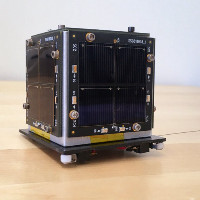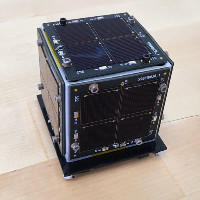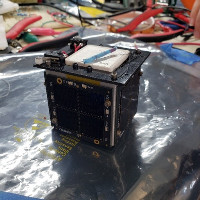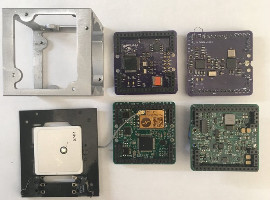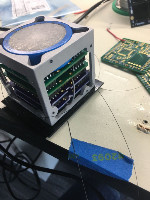| Spacecraft | TartanArtibeus-1 (Orbital Edge Computing, Unicorn-2TA1, Tartan-Artibeus-1) |
|---|---|
| Spacecraft type | PocketQube |
| Units or mass | PocketQube 1p |
| Status | Reentry 2024-11-23? No signal? (Object not identified in Space-Track, no successful reports in Libre Space forums, and IAC 2022 paper does not discuss operations as of 2022-12-19) |
| Launched | 2022-01-13 |
| NORAD ID | 51083 ? |
| Deployer | Albapod [Alba Orbital] |
| Launcher | Falcon 9 (Transporter-3) (Alba Cluster 4) |
| Entity name | Carnegie Mellon University |
| Institution | University |
| Entity type | Academic / Education |
| Country | US |
| GS Service | Alba Orbital |
| Launch brokerer | Alba Orbital, Exolaunch |
| Oneliner |
Educational amateur radio mission with orbital edge computing elements. |
| Description |
Developing hardware and software computer systems to add to ChipSats and CubeSats that will enable orbital edge computing. These new systems apply sophisticated machine inference to the sensor data that they collect and can identify sensed signals of interest without the need to activate the satellite’s power-hungry radio. The amateur community globally, will be provided with a delay ping-back service, allowing amateurs to send messages, with replies from the satellite transmitted later. The mission will engage with the amateur radio community and publicize this feature, through the project website and through social media interactions. TartanArtibeus-1 is a completely student-built educational mission that will test a novel power management system that does not include batteries, instead relying on industrial supercapacitors. The students will use the mission to show the viability of design, including support for communication, which will be of interest to the amateur community. As a proof of concept, this mission shows the viability of ultra-small-form factor batteryless satellites. The mission includes a field-patchable intermittent computing system, illustrating the ability to deploy and run sophisticated computer software even on such an energy constrained device. This patching capability will allow many students from our lab to upload payload computations that will consume data on orbit. The power input (through solar panels) and power consumption (by computer and radio components) of the satellite will be telemetered to Earth for receipt by any amateur operator. Students will use these data to continue development on their open-source satellite deployment modeling infrastructure (the Cote Orbital Edge Computing simulator). The power trace data collected by the satellite will also be used in a student-run audio/visual art project, modulating images and sound as data from the satellite change over time |
| Sources | [1] [2] [3] [4] [5] |
| Photo sources | [1] [2] |
| On the same launch |
|
Last modified: 2024-12-31
